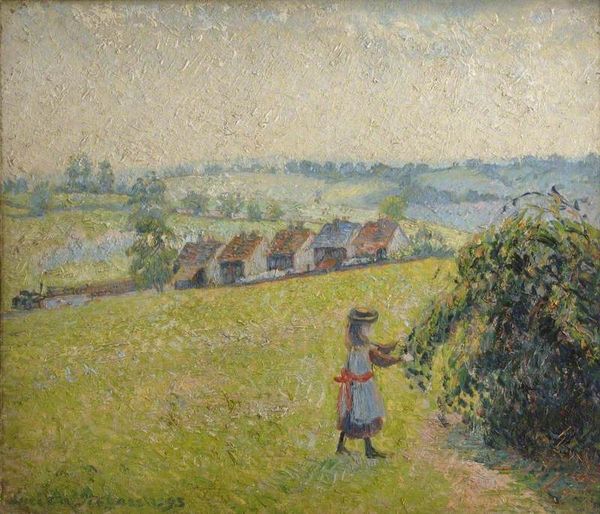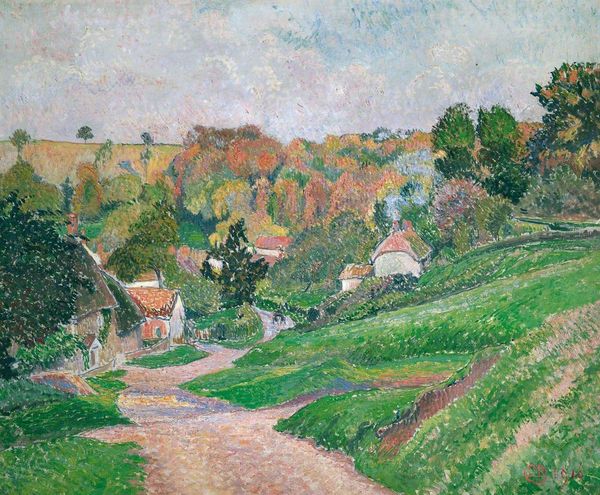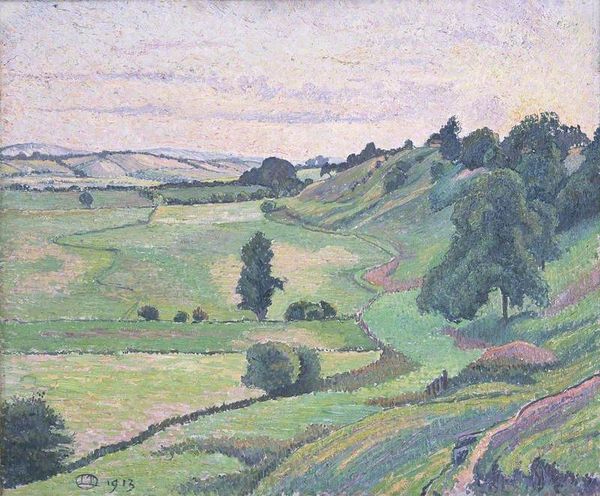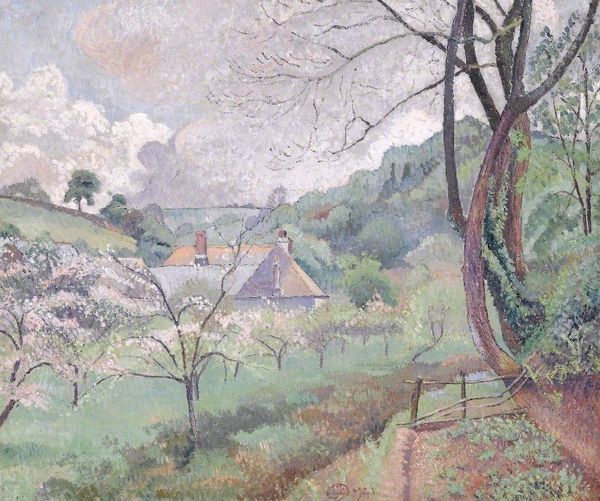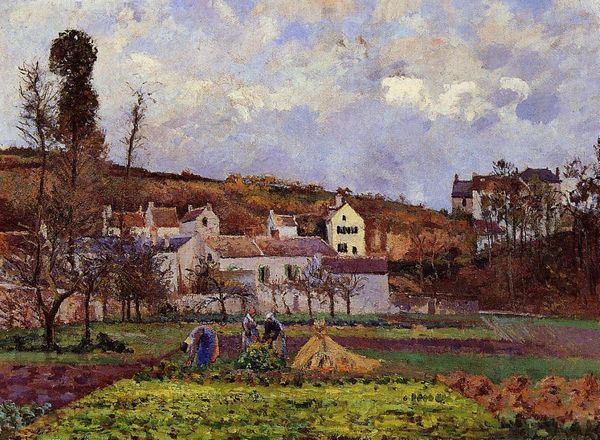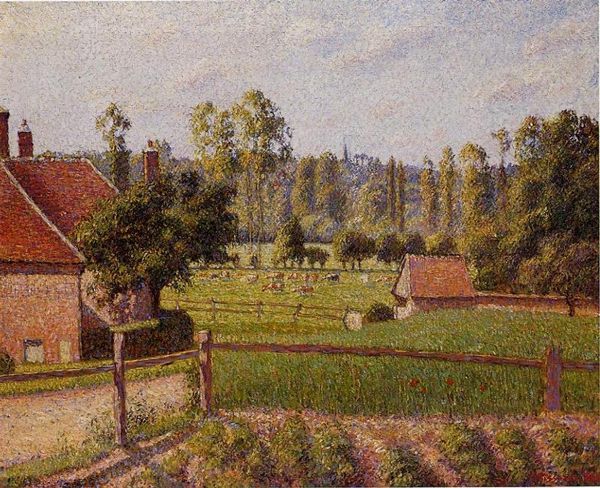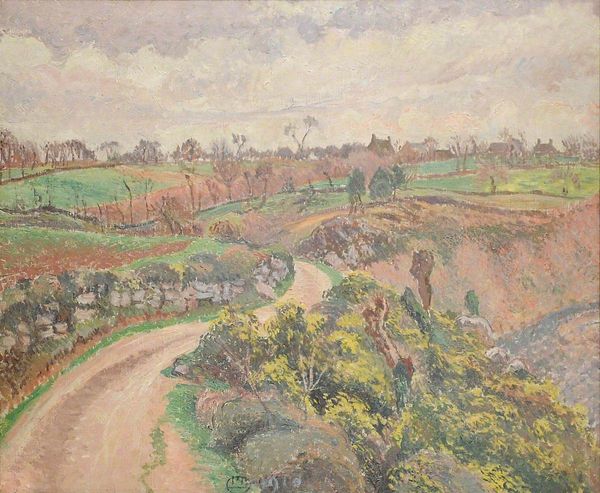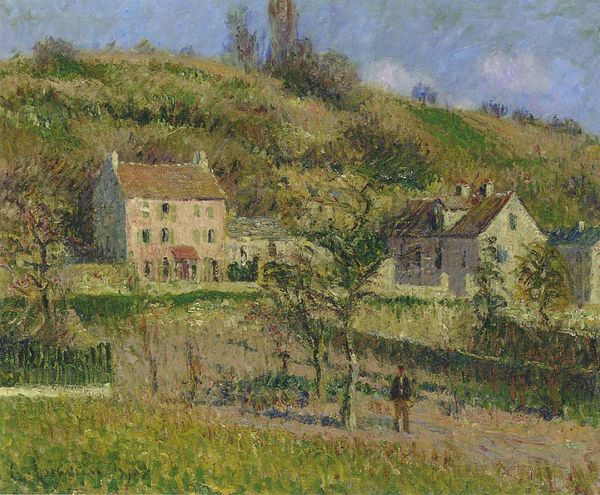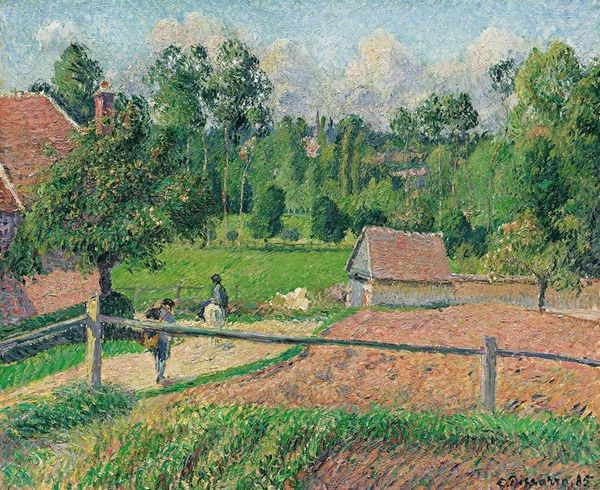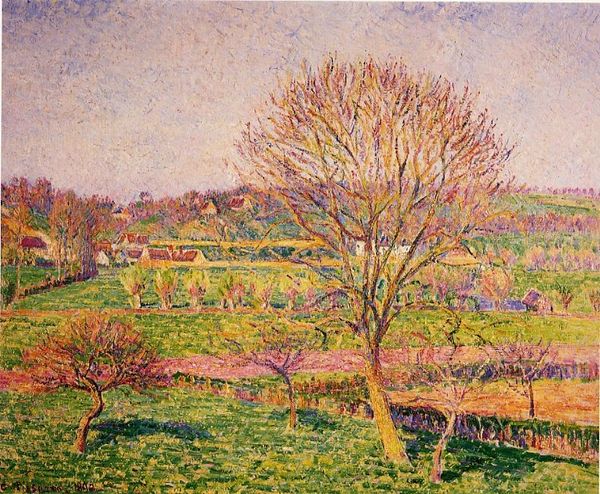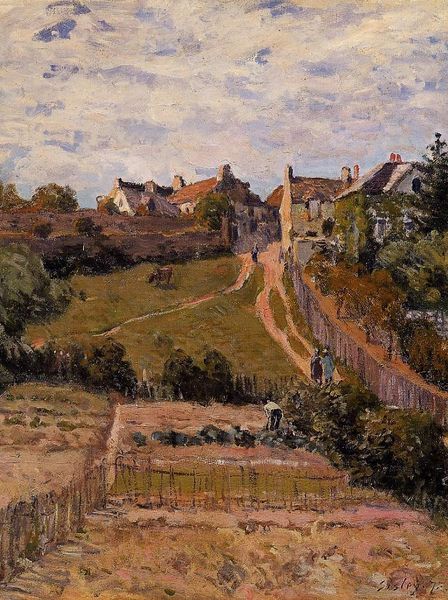
Copyright: Public domain
Editor: We're looking at Lucien Pissarro's "The Allotments" from 1918, rendered in oil paint, most likely en plein air. It evokes a sense of serenity and quiet labor. I’m curious about how the composition leads our eye through the scene. What structural elements stand out to you? Curator: Certainly. Note how Pissarro divides the canvas into distinct zones using color and texture. The foreground bursts with vibrant, loosely applied greens, contrasting with the smoother, more subdued hues of the middle ground where we see the earthy tones of the plowed fields and the buildings. Then, the background consists of a mix of mid-tone greens and greys. It’s almost like a study in contrasts. How do you feel this organization affects your interpretation? Editor: I suppose it creates a sense of depth, and the high vantage point invites us to appreciate the order of nature, perhaps. But it also feels intentionally segmented, even controlled. It is both picturesque and almost clinical. Does that make sense? Curator: It does indeed. The very visible brushstrokes, especially in the lower part of the composition, signal the artist’s active participation in shaping the scene. This impasto, combined with the clearly defined areas, creates a fascinating tension. We might then inquire into the effect of semiotic layering between, for instance, natural tones and geometries of cultivation and structure? How might a tension of forms be read? Editor: So, by examining the brushwork and spatial organization, we begin to unpack the layers of meaning that Pissarro embedded within "The Allotments". Curator: Precisely. Appreciating these intrinsic qualities allows for a more nuanced understanding of the artwork itself, regardless of extraneous biographical information.
Comments
No comments
Be the first to comment and join the conversation on the ultimate creative platform.


